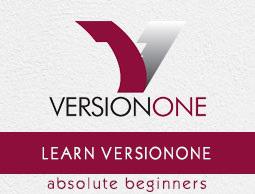VersionOne - Story
Story represents requirement, additional or change in existing functionality or new features. Stories are units of business values those can be estimated, tested and completed within a defined sprint.
Stories consist of mainly two aspects −
Add a Story
In this section, we will learn how to add a story. Story can be added by the Product Owner. Usually a team member cannot add a story until he has special roles like that of an admin, product owner, team lead, etc. There are many ways to add a story. We will discuss the ways as options below.
After addition, a symbol in green color shows up. The symbol represents a Story.
Option 1
Go to the Product Planner → Backlog.
Click on the Add Backlog Item Inline button present at the top right.
It will quickly add a top row where a user needs to enter the detail and click on the Save button. It adds the story into backlog items as top row.
The following screenshot displays how to add a story inline −

Option 2
Go to Product Planner → Backlog
Click on arrow symbol of Add Backlog Item Inline button present at top right.
Click on Add Backlog Item option.
A new window opens along with different fields to enter details about story.
Once the details are entered, a user clicks on the Save/Save & View/Save & New button. It adds the story into the backlog items and appears based on applied sorting methods.
The following screenshot displays how to add a story detail −

The following screenshot displays the Story Details page −

Option 3

A new window opens along with the different fields to enter the details about the story.
Once the details are entered, a user clicks on the Save/Save & View/Save & New button to add the story into the backlog item.
Access Story Details
After the addition of story, details can be accessed by any team member having the project access. In this section, we will discuss how to view all the details of the story.
To view the story details, click on Title or ID anywhere it appears in VersionOne. It opens the story details in a new pop up window.
Conversations and Activity Stream are present at the left side of the page.
At the top right, the Action Menu is present.
Relationship Links are present at the top bar.
The main page consists of the story details.
The following screenshot shows the Story Details page −

From the Story Details page, the following high-level tasks can be performed using the tabs at the top right of the grid −
| If a user wants to... |
Do this... |
| View or update story details |
Click the Details tab. |
| View the change history for a story |
Click the History tab. |
| View a graphical representation of the story's relationships to other workitems |
Click the Visualize tab. |
| Edit story details |
Click on the dropdown to select the Edit tab and later open the Story Edit window. A user can also open this dropdown menu to perform other actions (Plan Story, Add Task, Add Test, Generate Parent Epic, Copy, Sign Me Up, Block, Split, Quick Close, Close and Convert to Defect, Delete, and Watch Story). |
Following screenshot shows the tab of high level tasks −

Manage Story Details
At the bottom of the Story Details page, a user can perform the following functions by clicking the Add or Assign buttons. To remove any items, a user can click Remove from the selected story.
| If a user wants to... |
Do this... |
| Add a new task |
Go to Tasks and click Add Inline. |
| Add a new test |
Go to Tests and click Add Inline. |
| Assign upstream dependencies from available backlog |
Go to Upstream Dependencies and click Assign. |
| Assign downstream dependencies from available backlog |
Go to Downstream Dependencies and click Assign. |
| Identify (select) issue(s) have been resolved |
Go to Issues Resolved and click Assign. |
| Select an existing issue to assign as a blocking issue |
Go to Blocking Issues and click Assign. |
| Select existing Backlog items that are affected by the defect |
Go to Breaks Workitems and click Assign. |
| Select an existing request |
Go to Requests and click Assign. |
| Select an existing defect that breaks the selected story |
Go to Broken By Defects and click Assign. |
| Designate the most current build(s) affected by the defect |
Go to Last Affected Build Runs and click Assign. |
| Add a newlink remote documentation |
Go to Links and click Add.. |
| Add a new fileattachement |
Go to Attachments and click Add.. |
The following screenshot displays how to manage story details −










